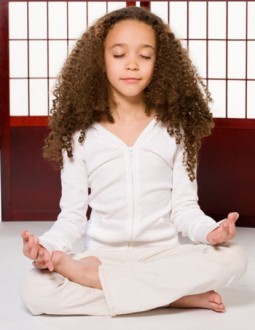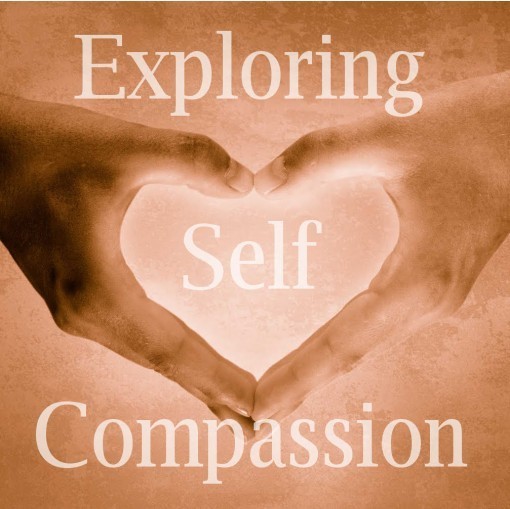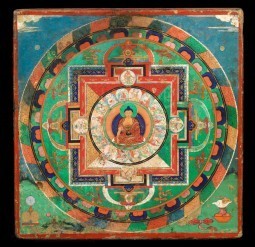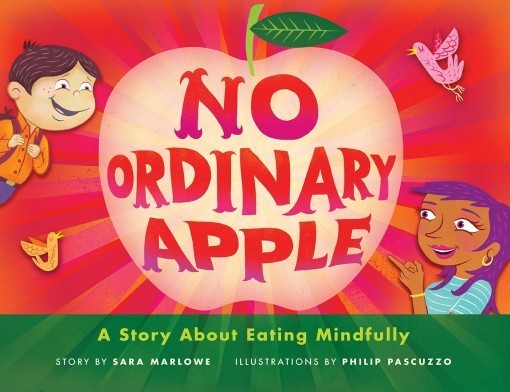Bodhipaksa's Blog, page 30
September 11, 2013
Seven ways to teach your children mindfulness
 Here are seven practices that you can do with young children, to help bring mindfulness into your home.
Here are seven practices that you can do with young children, to help bring mindfulness into your home.
Just before leaving for school in the morning, stand together and take three mindful breaths.
When your child comes home from school, give him or her a piece of fruit and ask them to pretend they are from another planet and have never seen this piece of fruit before. Ask them to describe their experience using all five senses. What does it look like? Smell like? Feel like? Taste like? Does it make a sound when they bite it?
Take three mindful breaths as a family before eating and try to begin the meal mindfully.
Go for a walk with your child and pay attention to what you both notice around you, what you see, hear, smell and touch. Share some of the things that you’re noticing.
Tell your child you are going to ring a bell or a singing bowl. Ask them to listen carefully to the sound of the bell and raise their hands when they can no longer hear it.
Have your child lie down on a mat on the floor, or on their bed, and place their favorite stuffed animal on their belly. Have them rock the stuffed animal to sleep with the movement of their belly as they breathe in and out. This is how they can begin to pay attention to their breathing.
Before bed, share something that you are grateful for that happened that day – something that enriched your life. Small things are best! Have your child do the same.
These suggestions are adapted from an article in Parents Canada.
Related posts:
What animal trainers can teach you about establishing a daily meditation practice
Sign of the Times: mindfulness in schools
Six ways of reflecting on impermanence
Related posts brought to you by Yet Another Related Posts Plugin.

September 10, 2013
Any meditation you can walk away from is a good meditation

Meditation’s not necessarily going to be easy or pleasant. You may find that you’re sitting with a chaotic mind, or that you’re falling asleep, or that you have physical discomfort. And there can be a tendency to label those times as “bad” meditations.
If that happens to you, I have two sayings that you might find useful:
“Any meditation you can walk away from is a good meditation.”
“The only bad meditation is the one you didn’t do.”
It’s the doing of the practice that’s the main thing; whether or not there was pleasure present isn’t that important.
Ironically, though, the less you worry about whether your meditation is pleasant or not and the more you just get on with doing it, the more likely it is that your meditation will be pleasurable. Life’s funny that way.
Just do it. It may not be easy, but it changes you in ways that make your life more meaningful, rich, connected, and (at times at least) joyful.
Related posts:
Day 23 of Wildmind’s 100 Day Meditation Challenge
Day 29 of Wildmind’s 100 Day Meditation Challenge
Is meditation supposed to make you happier?
Related posts brought to you by Yet Another Related Posts Plugin.

“A dangerous and evil piano piece”
Related posts:
“No man chooses evil, because it is evil; he only mistakes it for happiness, the good he seeks.” Mary Wollstonecraft
Obama = Evil
Related posts brought to you by Yet Another Related Posts Plugin.

September 9, 2013
Surprising ally for snow leopards: Buddhist monks
 Tia Ghose, LiveScience: The endangered snow leopard has some allies in unexpected places.
Tia Ghose, LiveScience: The endangered snow leopard has some allies in unexpected places.
The leopards are being protected by hundreds of Buddhist monasteries on the Tibetan plateau, new research suggests.
The scientists, who detailed their study last week in the journal Conservation Biology, found that half of the monasteries are within the snow leopards’ habitat and that monks patrol the wilderness to prevent poachers from killing the rare cats.
“Buddhism has as a basic tenet — the love, respect, and compassion for all living beings,” said study co-author George Schaller, a biologist with the endangered cat conservation group Panthera, in a statement. “This report …
Related posts:
Monochrome Friday: Reeds and Snow
Compassion and causing pain (Day 36)
Monks in a waterfall
Related posts brought to you by Yet Another Related Posts Plugin.

Exploring Self Compassion: A retreat in Washington, Sep 26–29, 2013
 I’m leading a retreat September 26th to September 29th at Camp Delaney, Sun Lakes State Park, Washington, on the theme of Exploring Self Compassion. Registration closes Sept 15th.
I’m leading a retreat September 26th to September 29th at Camp Delaney, Sun Lakes State Park, Washington, on the theme of Exploring Self Compassion. Registration closes Sept 15th.
Self compassion is essential if we are to have compassion for others. It is also a powerful tool for transforming our own lives, freeing us from fear and resentment and unleashing a more joyful and creative approach to life.
On this retreat we’ll explore, step-by-step, how to become more compassionate toward ourselves. We’ll learn to become more mindful of our own suffering, and to accept it without reacting. We’ll explore how to hold our suffering in mind compassionately, and how to imbue our minds with a compassionate awareness.
Self-compassion is something that’s been absolutely transformative in my own life. It’s taught me how to deal with things like recurring shame and guilt, and with feelings of hurt, resentment, and anger.
My teaching is rooted in a long-term project passion I have for exploring a sequence of mental events — contact-feeling-volition-action — found in the Buddhist teaching of conditionality. The material I’ll be presenting, and the guided meditations we’ll be doing, arise from years of reflection and personal experience.
The retreat itself is hosted by the Seattle Buddhist Center (one of the centers of the Triratna Buddhist Community), and they’re the people to contact regarding booking a place, or for practical information about how to get there. Click here for more information.
Related posts:
Exploring Self Compassion: A retreat in Washington, Sep 26–29, 2013
“The Heart of Awakening”: a retreat with Bodhipaksa, Florida, Feb 22 to 24
The Power of Self-Compassion: A Workshop in Toronto, Oct 19, 2013
Related posts brought to you by Yet Another Related Posts Plugin.

September 6, 2013
Can changing how you think about stress make you healthier?
 In this fascinating TED talk, meditation teacher and health psychologist Kelly McGonigal presents evidence suggesting that stress itself isn’t harmful, but the belief that stress is harmful is! The belief that stress is harmful would then be a form of the nocibo effect — the opposite of the placebo effect — where believing something is harmful makes it so.
In this fascinating TED talk, meditation teacher and health psychologist Kelly McGonigal presents evidence suggesting that stress itself isn’t harmful, but the belief that stress is harmful is! The belief that stress is harmful would then be a form of the nocibo effect — the opposite of the placebo effect — where believing something is harmful makes it so.
Can changing how you think about stress make you healthier? According to McGonigal the science says yes. When you change your mind about stress, you can change your body’s response to stress.
Believing that stress is normal and healthy protects your blood vessels, promotes healing in the heart, and leads to the release of oxytocin, a hormone that leads to social bonding.
If McGonigal is right, this shift in perspective could save tens of thousands of lives each year.
Related posts:
Heaven vs. Hell
The changing religious complexion of the Supreme Court
Science shows what meditation knows: pain is not suffering
Related posts brought to you by Yet Another Related Posts Plugin.

September 5, 2013
The book that changed my life
 In the late 1970′s, between finishing high school and going to university, I opened a small book of ancient verses, and my life changed forever.
In the late 1970′s, between finishing high school and going to university, I opened a small book of ancient verses, and my life changed forever.
I’d been interested in Buddhism for years, but my local library only had one book on the subject — a rather dated “Teach Yourself” guide to Zen Buddhism. I’d read the book, and found it both intriguing and baffling, but struggled to get a sense of what difference Buddhism would make to my life. And I was looking for something life-changing.
One early autumn day I accompanied my parents on a shopping trip to the nearest large town, which was the possessor of that rare and precious thing — a book shop. I’d inherited a love of reading from my father, and so the two of us went (more or less) one way while my mother went hers. And after a period of browsing, I happened across a slender black-spined volume: “The Dhammapada.” I can still see exactly where in the book shop, on which shelf, and where on the shelf the book sat, as clearly as I can see the book now on the desk in front of me.
I’d heard of the Dhammapada, and knew it was an early Buddhist scripture. I knew it was the real deal — the teaching of the Buddha — as opposed to being merely about Buddhism. And sitting in the passenger seat of my parents’ car, waiting for my mother to return from her bargain-hunting, with my father beside me listening to the droning incantation of the days’ football results, my eager hands slipped the slim book from its paper bag, and skipping past the introduction I read the following words:
What we are today comes from our thoughts of yesterday, and our present thoughts build our life of tomorrow: our life is the creation of our mind. If a man speaks or acts with an impure mind, suffering follows him as the wheel of the cart follows the beast that draws the cart.
What we are today comes from our thoughts of yesterday, and our present thoughts build our life of tomorrow: our life is the creation of our mind. If a man speaks or acts with a pure mind, joy follows him as his own shadow.1
These clear and simple words were revelatory. We have choices. The key to happiness and suffering lies in the quality of our thoughts, words, and actions. Reading these verses, I knew I was a Buddhist.
Inherent in these few lines is everything we need to know about what it means to live a Buddhist life. We can find out for ourselves, through experience and observation, which thoughts, words, and actions lead to suffering and which to joy. These choices lie before us in every moment of our lives: the skilful or the unskilful; joy or sorrow. Which are you going to choose? In every moment you make choices that change your life. Choose wisely.
1. Despite the fact that these verses had a big effect on me, this is a terrible translation!
Related posts:
The Dhammapada and vegetarianism
The pursuit of happiness (Day 50)
Why meditation isn’t the main thing in my life
Related posts brought to you by Yet Another Related Posts Plugin.

September 3, 2013
Why meditation isn’t the main thing in my life
 Given that I’m a meditation teacher and the author of a good number of books and audiobooks on meditation, you might think that meditation should be the central thing in my life. But — and this is something I only just realized — it’s not.
Given that I’m a meditation teacher and the author of a good number of books and audiobooks on meditation, you might think that meditation should be the central thing in my life. But — and this is something I only just realized — it’s not.
I’ve carried around, not very consciously, the idea that meditation should be the most important, the most central, thing in my life. And I suspect that this mostly unconscious idea has led to inner conflict and resistance. Certainly, when I realized just the other day that meditation wasn’t and should be the central thing in my life, I felt unburdened. I felt lighter, freer, and clearer. The notion that meditation should be the central thing in my life was something that had been weighing me down.
It’s not that I don’t take meditation seriously. I meditate every day. It’s just what I do. It’s part of who I am. To use a common, but useful, analogy, brushing my teeth isn’t the most important part of my life, but I make sure I do it at least twice each day.
What is the most important thing in my life? What brings me the most happiness and gives me the sense that my life is being spent in a meaningful way is seeing people grow and become happier. Having a hand in that process is deeply fulfilling. So basically helping people is the central thing in my life.
But even that’s a bit of a simplification. I have a drive to become awakened, or enlightened. Or at least I have a drive to seek a meaningful way of living that maximizes my sense of happiness and peace and that minimizes the amount of unnecessary suffering I experience. That’s my quest. And it just so happens that the Buddhist goal of spiritual awakening and the Buddhist path to awakening match up with my own goal. That’s not surprising, since the whole Buddhist path is about ending suffering and finding peace.
I sometimes talk about my quest (and always think about it) as wanting to know the mind of the Buddha. Now that might sound a little selfish, or self-centered, but there’s another factor. It turns out that if I want to maximize my happiness, minimize the amount of unnecessary suffering I experience, experience more peace, and feel that I’m living life meaningfully, then I need to help others.
I can’t exactly explain why. You can call it “interconnectedness” if you want. You can talk about it in terms of non-duality. But fundamentally, helping others to move toward awakening (whether or not they’re aware that’s where they’re headed) seems to be inseparable from my own movement toward enlightenment. This is what the Mah?y?na called mah?karu??, or great compassion, in which we aim to guide all beings to the happiness of awakening. I believe this is what the earlier Buddhist tradition also called upekkh?, the fourth brahmavih?ra. Everyone else is going to tell you that upekkh? is “equanimity,” but the root of the word upekkh? suggests that it originally meant “to watch over closely” and its place as the pinnacle of the brahmavih?ras convinces me that upekkh? and mah?karu?? are the same thing.
There’s another way you can express all this, which is to say that the Buddha (enlightenment, awakening, living an awakened life) is at the center of my life. And if I think of my life as a ma??ala — a symbolic arrangement of values — then the Buddha is at the center of my ma??ala.
Ideally, I’d like everything else in my life to relate to and be supportive of the center. That’s far from being the case: I have anger and craving and any number of bad habits that represent movements away from the center. But that’s what practice is about. It helps us to “want one thing.”
Meditation is just a support — albeit a crucial one — to the goal of getting myself and all beings to awakening: my “one thing.” It can never be, never has been, and never should be the most important thing in my life, even though it’s a crucial practice.
Related posts:
“May all beings dwell in peace”: A guided meditation (Day 91)
Is meditation supposed to make you happier?
Looking into the heart’s depths (Day 92)
Related posts brought to you by Yet Another Related Posts Plugin.

“No Ordinary Apple,” by Sara Marlowe and Philip Pascuzzo

Title: No Ordinary Apple: A Story About Eating Mindfully
Author: Sara Marlowe, Philip Pascuzzo (illus.)
Publisher: Wisdom Publications
ISBN: 1-61429-076-8
Available from: Wisdom Publications, Amazon.co.uk, and Amazon.com.
No Ordinary Apple is a variation on the famous “raisin exercise” that’s so popular in meditation classes. (If you’re not familiar with the raisin exercise it’s where we mindfully eat a single raisin, thoroughly exploring it with our senses.) But No Ordinary Apple is, of course, a children’s book — and a very welcome addition to the growing body of meditation resources for children.
The fruit is question is an apple rather than a raisin and the mindful eater of this apple is a young boy called Elliot, who is waiting at his adult neighbor Carmen’s house between school and his parents getting home.
Elliot is hungry and asks for a snack. Carmen counters with an offer of an apple: a suggestion that is none too popular with Elliot, who wants candy.
Carmen is a good saleswoman, though. Or perhaps she teaches meditation. At any rate, she persuades Elliot that this is no ordinary apple, but tells him that he’ll have to find out for himself why this is the case.
Carmen guides an excited Elliot through an exploration of the apple using all of his senses. He moves from having a stereotypical view of an apple as “red” to recognizing the many colors that it contains. He touches the apple and explores its textures. He smells it. He even listens to the “thwap” it makes as he tosses it from hand to hand. And of course he eventually bites into it, chews it, and swallows it — all the time exploring the apple mindfully.
Of course Elliot realizes that this is indeed no ordinary apple, but it has to be pointed out to him that it’s not the apple that’s special — it’s the attention that he gave to it that created a special experience. And Carmen helps him to see that anything he eats — even candy! and perhaps even food he doesn’t like — will be extra-special when eaten with mindfulness.
No Ordinary Apple is a lovely book. The illustrations are larger-thank life and they do in fact make the experience of eating an apple look special. The story is fun, and children will feel like they’re learning something rather than being preached at.
My daughter, who’s six, was very excited about the prospect of us doing this exercise together, and she even set aside some apples on top of the refrigerator, awaiting the perfect moment (the kids had to be in need of a snack, and we needed some uninterrupted time). When the right time arrived, both my kids (I also have a five-year-old son) enjoyed the exercise, although the youngest had some trouble restraining himself from eating the apple during the looking-feeling-smelling-listening stage, and once we were tasting our apples he couldn’t stop himself from swallowing it. But he had fun. My daughter, who’s almost two years older, really enjoyed the exercise and was old enough to restrain herself. Actually, when I’ve done the raisin exercise with adults there have been a few who’ve had no more discipline than my son!
The principles outlined in the story can very easily be translated into practice, both for encouraging children to eat mindfully, and for encouraging parents to do likewise! Trying to teach a child to eat mindfully is going to be more successful if the parents exemplify mindful eating.
Related posts:
An extraordinary life made ordinary
Mindfulness of hunger
Back to the Present: How to Live in the Moment
Related posts brought to you by Yet Another Related Posts Plugin.

August 30, 2013
Exploring Self Compassion: A retreat in Washington, Sep 26–29, 2013
 I’m leading a retreat September 26th to September 29th at Camp Delaney, Sun Lakes State Park, Washington, on the theme of Exploring Self Compassion.
I’m leading a retreat September 26th to September 29th at Camp Delaney, Sun Lakes State Park, Washington, on the theme of Exploring Self Compassion.
Self compassion is essential if we are to have compassion for others. It is also a powerful tool for transforming our lives, freeing us from fear and resentment and unleashing a more joyful and creative approach to life
On this retreat we’ll explore, step-by-step, how to cultivate self-compassion. We’ll learn to become more mindful of our own suffering, and to accept it without reacting. We’ll explore how to hold our suffering in mind compassionately, and how to imbue our minds with a compassionate awareness.
Self-compassion is something that’s been absolutely transformative in my own life. It’s taught me how to deal with things like recurring shame and guilt, and with feelings of hurt, resentment, and anger.
My teaching is rooted in a long-term project passion I have for exploring a sequence of mental events — contact-feeling-volition-action — found in the Buddhist teaching of conditionality. The material I’ll be presenting, and the guided meditations we’ll be doing, arise from years of reflection and personal experience.
The retreat itself is hosted by the Seattle Buddhist Center (one of the centers of the Triratna Buddhist Community), and they’re the people to contact regarding booking a place, or for practical information about how to get there. Click here for more information.
Related posts:
“The Heart of Awakening”: a retreat with Bodhipaksa, Florida, Feb 22 to 24
The Power of Self-Compassion: A Workshop in Toronto, Oct 19, 2013
Peter’s health insurance reform march on Washington
Related posts brought to you by Yet Another Related Posts Plugin.




